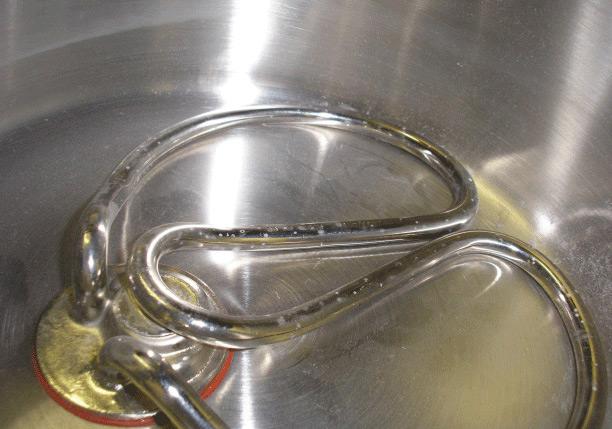Fabric Steamers – how do they work? What does the work? The steam relaxes the fabric – expanding each piece of yarn. The nozzle, or the item in contact, is the most important tool. There are two ways of producing steam: the “coffee machine” or the kettle.
Heat Exchange Fabric Steamers
The cheapest way is the “coffee machine” in which cold water is drawn by heat into a tube with an element heating it to produce a small volume of steam quickly. Steamers that work on this principle abound (so much so that there are copies of copies flooding the market), fabric steamers that are cheap to manufacture and destined for the domestic appliance market in the Americas. The functional principle of these machines hasn’t changed, but recommending the use of distilled water has fallen by the wayside. With regular use the steamer will quickly clog up with limescale and silt, and that results in blockages and overheating. You should ideally use this type of steamer with distilled water or descale after use (not an easy task).
These type of fabric steamers tend to be narrow and top heavy – beware, they can very easily topple over with a heavy gown hanging from them. Cables are usually very short and if you use an extension lead you need to ensure that it is sufficiently rated.
Vessel Fabric Steamers
The second way of making steam is also the more expensive, but then better things usually are. The technology behind the Propress steamer is based on a stainless steel container with a nickel plated industrial element that heats up all the water in the container , so that scale and silt build up is over far greater volume or mass and not critical ( scale is created by focused heat). Bi-annual conventional descaling is all that is necessary, and a regular flush to remove any sediment, if in hard water areas.
These types of fabric steamers tend to have a lower centre of gravity and more “substance” to their design thus they tend to be more mobile, stable and easy to carry. Unlike cheaper domestic models, they have been designed purely for commercial use and are built to offer extended life expectancy.
Unlike professional steam irons, the steam produced by a steamer is not pressurised which means that the contact temperature of the steamer nozzle is lower, making it safe to use even on the most delicate of the man-made fabrics.


Showing the element in the base of the fabric steamer water tank

